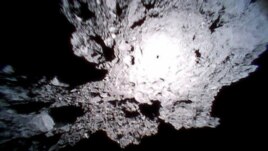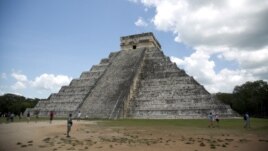Eight countries have signed an international agreement for moon exploration called the Artemis Accords.
8个国家签署了一项名为《阿尔忒弥斯协议》的国际探月协议。
The U.S. space agency, NASA, announced the agreement last week. NASA is trying to create rules for building long-term human settlements on the moon's surface.
美国宇航局上周公布了这一协议。美国宇航局正试图对在月球表面建立长期人类居住区制定规则。
The agreement is named after NASA's Artemis moon project. It seeks to build on existing international space law by creating "safety zones." These zones would surround future moon bases to prevent conflict between states operating there. It would also permit private companies to own the lunar resources they find.
该协议以美国宇航局的阿尔忒弥斯登月计划而命名。它试图以现有的国际空间法为基础建立“安全区。”这些安全区将会围绕未来的月球基地,以防止在月球运作的各个国家之间发生冲突。它还将允许私人公司拥有他们找到的月球资源。
The United States, Australia, Canada, Japan, Luxembourg, Italy, the United Kingdom, and the United Arab Emirates signed the agreements. Officials met during a yearly conference on space that took place last week. The deal followed months of talks in a U.S. effort to build allies under its plan to return astronauts to the moon by 2024.
美国、澳大利亚、加拿大、日本、卢森堡、意大利、英国和阿联酋签署了这份协议。有关官员在上周举行的年度太空会议上会面。这份协议公布之前,美国根据其2024年前让宇航员重返月球的计划,就建立太空联盟进行了数月的谈判。
"What we're trying to do is establish norms of behavior that every nation can agree to," NASA administrator Jim Bridenstine told reporters. He said the agreements accept a 1967 treaty that says the moon and other planets cannot be claimed for national ownership.
美国宇航局局长吉姆·布里登斯汀表示:“我们试图做的是建立每个国家都能同意的行为规范。”他说,这些协议承认1967年签订的一项条约,该条约规定月球和其它行星不能被宣称为国有。
Bridenstein said the agreements create the "the broadest, most inclusive, largest coalition of human spaceflight in the history of humankind."
布里登斯汀表示,这些协议创造了“人类历史上最广泛、最包容和最大规模的载人航天联盟。”
The governments of the United States and other countries that have space programs consider the moon important to their long-term goals. The moon has value for scientific research that could make possible future missions to Mars. However, these activities are subject to international space law that many experts consider outdated.
拥有太空计划的美国等国家的政府认为月球对他们的长期目标很重要。月球具有科学研究价值,它能让未来的火星探测任务成为可能。然而,这些活动要遵守许多专家认为已经过时的国际空间法。
In 2019, U.S. Vice President Mike Pence directed NASA to return humans to the moon by 2024. This cut in half the amount of time the agency had planned to take. The goal now is for humans to live on the moon for a long time.
2019年,美国副总统彭斯指示美国宇航局在2024年前登上月球。这将该机构过去计划的时间缩短了一半。现在的目标是让人类在月球上生活很长时间。
The NASA program is expected to cost billions of dollars. It will send robotic vehicles to the moon before a human being.
美国宇航局的登月计划预计将会耗资数十亿美元。它将在人类登月前,先把机器人装置送上月球。
NASA also plans to build a space station that will orbit the moon. Plans call for it to be built by companies supervised by NASA and international partners.
美国宇航局还计划建造一个围绕月球运行的空间站。计划主张由美国和国际合作伙伴监管的公司来建造这个空间站。
I'm Susan Shand.
我是苏珊·尚德。(51VOA.COM原创翻译,禁止转载,违者必究!)













